Around this time last year, we were treated to an unexciting but underrated removal spell, Tar Snare. I argued that it was an unexciting but nevertheless important. Well, Aether Revolt brings us its own spin on Tar Snare: Cruel Finality. How good is it?
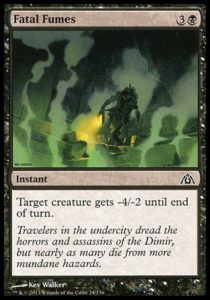
Why Should We Care?
As ever, I’d like to point out how important it is to examine lower-quality removal. When considering Limited, there’s not much utility in extolling the virtues of cards like Lightning Bolt or Oblivion Strike; they are obviously strong, are high picks, and you’ll play every copy of them you get (assuming you play their color or splash them).
Weaker removal spells require much more analysis. Is Grasp of the Void better or worse than Sheer Drop? How highly do you pick Just The Wind? Is a pick five Drag Under a signal, or around the average time it should be drafted? How many copies of Certain Death are worth playing? Is Debilitating Injury a stronger card in Khans of Tarkir than Dead Weight is in Shadows Over Innistrad draft? These are the more interesting questions, because the answers aren’t so obvious.
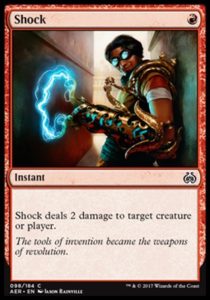
The Competition
A major difference between Aether Revolt and Oath of the Gatewatch is competing removal. In Oath of the Gatewatch, Tar Snare was one of the cheapest common removal spells, competing with Reality Hemorrhage (the cheapest common removal spell, Searing Light, was awful). In Aether Revolt, Red has Shock to compete with. It’s not damning to Cruel Finality, but the existence of Shock somewhat lowers the value of two-toughness creatures (which Cruel Finality can kill) and increases the value of 2/3s (which it can’t).
There’s also competition within black. Just as with Oath of the Gatewatch’s Oblivion Strike, black has a strong, unconditional, four mana removal spell in Daring Demolition. You’re (probably, the format is still young) happy to play several Daring Demolitions. You were definitely extremely lucky if you could get four Oblivion Strikes in Oath Limited, but you were never happy to play more than two Tar Snares. How does Cruel Finality stack up?
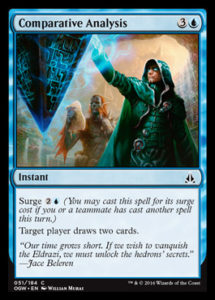
Compared to Tar Snare…
As discussed in the Tar Snare article, there’s not much of a difference between giving a creature -3/-2 and -2/-2. Fatal Fumes providing an additional power drain over Tar Snare and Disfigure didn’t offset its increased cost. The loss of -1/-0 does little to impact the card, other than making it a slightly worse combat trick (and incapable of saving a five-power creature from Skywhaler`s Shot).
Scry one, however, is a sizable boon. In the late game, scrying a land or bad card to the bottom is equivalent to drawing a card. In the early game, it can be the difference between curving out and missing your land drop, or it can do nothing (since in the early game, there’s usually a much wider array of useful draws). Cruel Finality‘s scry allows you to kill a creature or win in combat and get some marginal advantage, like a 1.5-for-one. That’s not bad at all. By the numbers, it definitely looks to be better than Tar Snare.
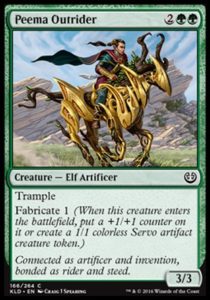
Context
Removal spells do not live in isolation. Oblivion Strike was excellent in Oath Limited (where there were plenty of expensive creatures to kill), but it would have been pretty underwhelming in original Zendikar Limited, where 2/1s for two ruled the land.
The average size of creatures determines how good a removal spell is. I like to think about formats in terms of a “magic number.” For example, in Khans of Tarkir, the magic numbers were two and five. A two-power creature could kill a morph, and creatures with less power were generally bad. Very few things had more than four toughness, so a five-power creature could smash through the majority of blockers. In Kaladesh, I think that this magic number is four; Peema Outrider’s high power and toughness makes it formidable on offense and defense, while Hill Giants like Weldfast Wingsmith are worse than they’d normally be, simply because of how hard it is to profitably attack or block with them.
If the magic number for Aether Revolt is also four, then Cruel Finality is worse than it would be in other contexts. Sure, you can weaken a creature in combat (and the combat tricks in the format aren’t particularly strong), but you risk getting blown out if your opponent has a response, and you still need to be able to set up a favorable combat in the first place. Fortunately for Cruel Finality, creatures in Aether Revolt appear to be smaller than they were in Kaladesh. There’s no Thriving Rhino or Consulate Skygate to gum up the ground with four toughness. Sure green has a 6/6 for five in Lifecraft Cavalry, but one can’t expect a conditional, three-mana removal spell to solve all of your problems.
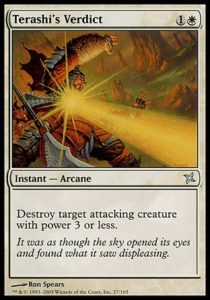
The Verdict
I played a couple copies of Cruel Finality prerelease weekend and it did not disappoint. It can kill a good number of creatures, and every time it did, I got a little bit of value from the scry. (Theros taught us a valuable lesson: even scry 1 is a powerful rider for an otherwise unimpressive spell.) I even got to counter a Skywhaler`s Shot by shrinking my own creature, which felt awesome.
I was happy to play two copies of Cruel Finality, and in the absence of better removal, could see playing three copies. I likely never would have said that about Tar Snare. Amazing how much a format with slightly smaller creatures and scry 1 can do for a Tar Snare.
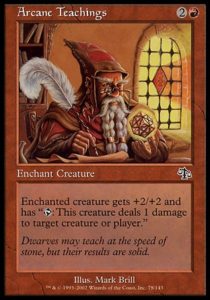
That’s all for this week, friends. Hopefully you’ve enjoyed another delving into the design of a Magic card. I’ve gone a bit less into the history of cards like Cruel Finality this time, but only because we did that with Tar Snare. Next time, we’ll pick something we haven’t discussed the likes of before.
And, as always, thanks for reading.
—Zachary Barash
Zachary Barash is a New York City-based game designer. He’s played Magic since 1994, but went on a long hiatus, like most folks. He’s currently pursuing his MFA in Game Design at NYU and designs for Kingdom Death: Monster, a game that is most definitely not Magic.

